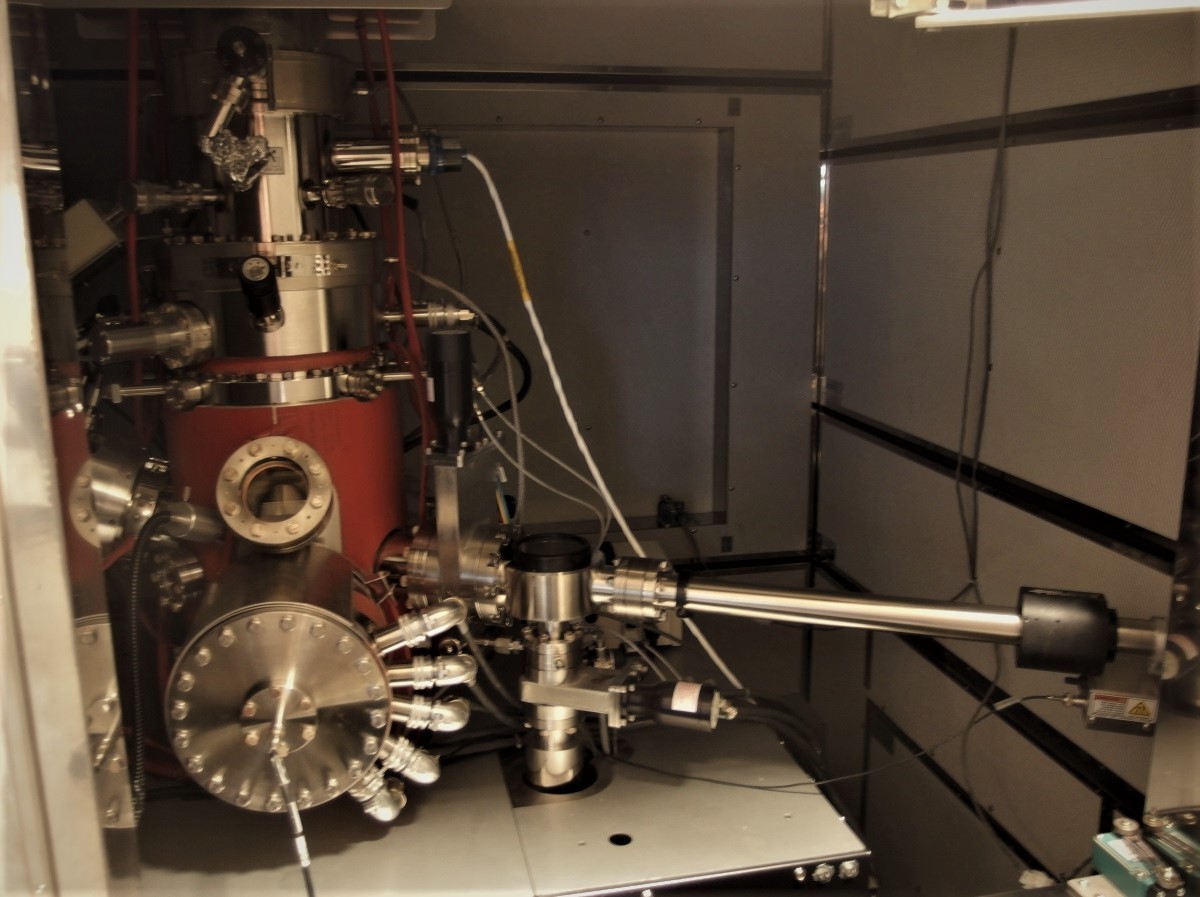
Author: Ali Kosari Mehr
Auger electron spectroscopy (AES)
Auger electron spectroscopy is classified as an analytical technique to determine the elemental composition, and in many cases, the chemical states of surface atoms in solid materials. In Auger electron spectra, the number of detected electrons per their energy is plotted. Elements (except for hydrogen and helium) can be determined based on the energy peak position of the Auger electrons, while their concentration on the surface is dependent on the intensity of the peaks. Accordingly, one can utilize Auger spectroscopy to map the distribution of elements on the surfaces, with a high spatial resolution. Ion etching beams can also be assisted to obtain the depth profile of subsurface elements.
Surface sensitivity (a few monolayers), relatively high Auger electron yield in light elements, and high spatial resolution are among the advantages of this analysis. Notwithstanding, ultra-high vacuum requirements and surface contamination may hinder the usage of this technique.
Auger process
The emission of Auger electrons is initiated by the creation of an ion with a vacancy in its inner shell. An electron from the upper states relaxes to the vacancy and an Auger electron is emitted simultaneously. This simultaneous two-electron Columbus rearrangement results in the creation of a final state with two vacancies. In an excited ion, the Auger electron emission is one of the two possible relaxation mechanisms. Another possible mechanism is X-ray fluorescence, in which a photon is emitted. In the figure below, for instance, the initial vacancy has happened in the K shell.
The emission of Auger electrons occurs when a specimen is bombarded by electron, X-ray, or Ions. However, in most Auger apparatuses, an electron beam is used to generate Auger electrons, as they can be focused on a very small area.
Schematic diagram of Auger electron emission (up) and X-ray fluorescence (down); the primary incident particle leads to the ejection of a K shell electron.
References:
- Childs KD, Carlson BA, LaVanier LA, et al (1995) Handbook of Auger Electron Spectroscopy: A Book of Reference Data for Identification and Interpretation in Auger Electron Spectroscopy. Physical Electronics, Inc. Webpage
-
 20 Aug, 2022What is Auger electron spectroscopy?
20 Aug, 2022What is Auger electron spectroscopy? -
 13 Jul, 2022Classification of vacuum pumps
13 Jul, 2022Classification of vacuum pumps

